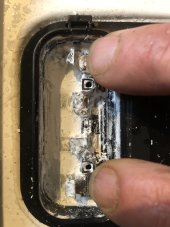MountainmanBill
New Member
- Joined
- Feb 20, 2021
- Messages
- 69
I bought 9 used Jinko solar panels today. Here are the specs:
295-watts
VMP 36.8 V
IMP 8.08 A
VOC 45.2
The voltages of the panels are varying anywhere from 28-41 volts. The amps are roughly the same at 6-amps. It was hard to get accurate readings with varying cloud cover, but I took the reading with roughly the same amount of irradiance. The nine panels will be connected in 3S3P. I understand that the best I can hope for is the lowest voltage and lowest amps in each string. If the lowest voltage is indeed 28 volts per string, then the total voltage for the array will be (3 X 28-volts) 84 volts. I have two charge controllers connected to the same battery bank. The other array has around 100 volts going into its charge controller. This additional array will have 84 volts going into its charge controller. That's a 16-volt difference between the two arrays feeding their individual charge controllers, which feed the same battery bank. Is that 16-volt difference acceptable or not?
295-watts
VMP 36.8 V
IMP 8.08 A
VOC 45.2
The voltages of the panels are varying anywhere from 28-41 volts. The amps are roughly the same at 6-amps. It was hard to get accurate readings with varying cloud cover, but I took the reading with roughly the same amount of irradiance. The nine panels will be connected in 3S3P. I understand that the best I can hope for is the lowest voltage and lowest amps in each string. If the lowest voltage is indeed 28 volts per string, then the total voltage for the array will be (3 X 28-volts) 84 volts. I have two charge controllers connected to the same battery bank. The other array has around 100 volts going into its charge controller. This additional array will have 84 volts going into its charge controller. That's a 16-volt difference between the two arrays feeding their individual charge controllers, which feed the same battery bank. Is that 16-volt difference acceptable or not?




![IMG_4161[2].JPG IMG_4161[2].JPG](https://diysolarforum.com/data/attachments/143/143534-0eb0b056056c6db207f8b3d19e5f3459.jpg)
